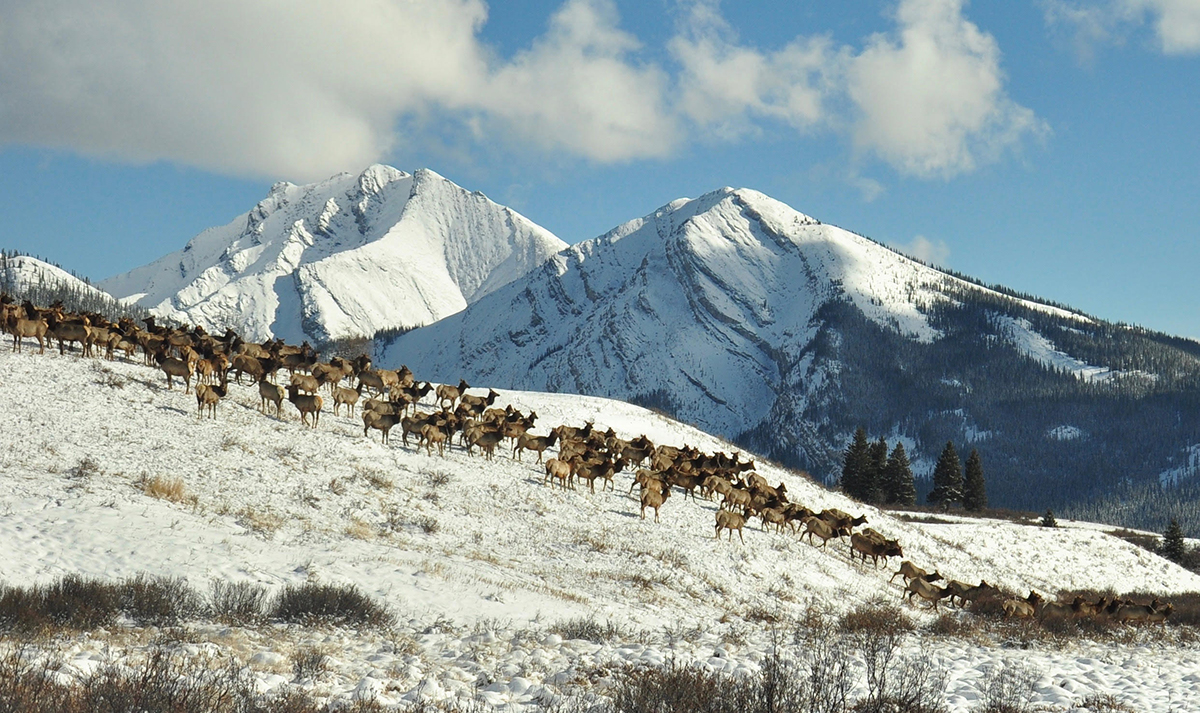
UAlberta biologists contributed data on the movement of migratory elk along the eastern front of the Rocky Mountains and around Banff National Park.
Across the globe, mammals move distances two to three times smaller in human-modified landscapes than they do in the wild, says research published in Science.
The study, led by researchers at the Senckenberg Nature Research Society and Goethe University Frankfurt with support from the University of Alberta, included 115 scientists around the world, collecting data from more than 800 animals in 57 mammal species. Movement data, including hourly location tracking over a two-month period, was compared to the Human Footprint Index (a measurement of human activities such as infrastructure, settlements, and agriculture).
Results show that, over long periods of time, the travel distances of the mammals studied have shrunk to half or even a third of what they are in the wild.
University of Alberta biological sciences professor Evelyn Merrill and former PhD student, Mark Hebblewhite, now professor at the University of Montana, collected data on the movement of migratory elk along the eastern front of the Rocky Mountains and around Banff National Park. Merrill and Hebblewhite have been studying elk movement in Canada for more than 16 years.
"Our data contributed perspectives on the gradient of environmental conditions that influence animal movement, a key to broad-scale assessment of human impact on animal movements," said Merrill.
The cause for shrinking movement patterns is a question for future research, although possibilities include physical barriers and landscape fragmentation, as well as the possibility that mammals are simply sticking to areas where food is abundant.
Ecosystem impact
However, the study identifies concerns that reduced travel distances could affect some ecosystem functions, such as transporting nutrients and seeds. "Additionally, mammalian movements bring different species together and thus allow for interactions in food webs that might otherwise not occur. If mammals move less this could alter any of these ecosystem functions," said Marlee Tucker, from Senckenberg Biodiversity and Climate Research Centre and Goethe University Frankfurt.
Back in Canada, Merrill will continue her study of elk. "We want to understand the factors influencing the shifts in migration patterns we have documented in Western Canada."
The study, "Moving in the Anthropocene: Global reductions in terrestrial mammalian movements" was published in Science, one of the world's leading peer-reviewed scientific publications.